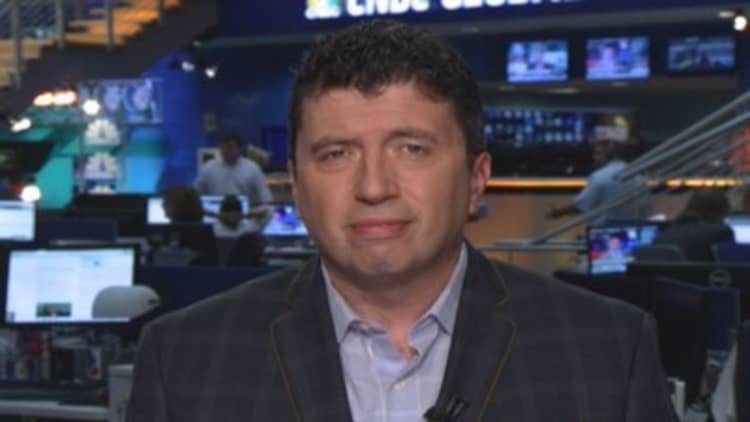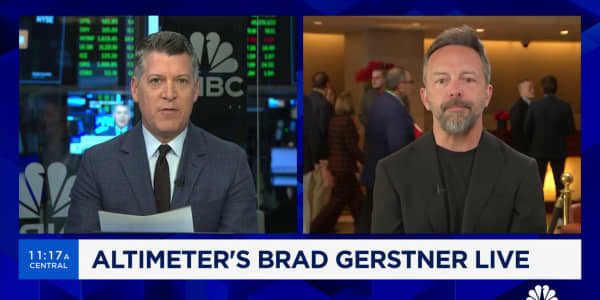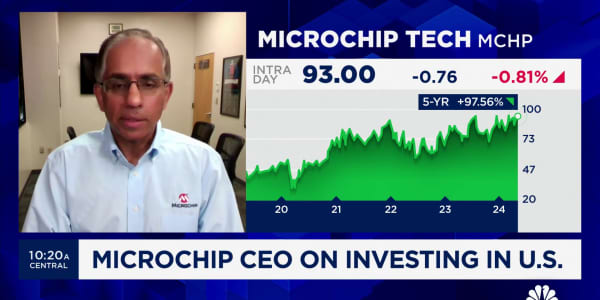
Multiple theories have been put for for the recent stock market weakness, none of them particularly satisfying.
The notion, then, that a lot of the current upset could be traced back to a so-called Death Cross a few months ago in the 10-year Treasury yield seems as plausible as any.
According to an analysis earlier in the week from Abigail Doolittle at Peak Theories Research, the benchmark note's 50-day moving average "crossed" below its 200-day trend, a move that technical analysts believe represents a substantial turn in sentiment that will lead to further market weakness.
In the case of the 10-year yield, the move actually is bullish for bonds and, as is often the case with the relationship between the two asset classes, negative for stocks and the index in particular.
"After the highly bearish trading action of late July, this is worth considering with the 'what's next' question front and center for most investors. There's little doubt that the slicing of the S&P's six-month uptrend was vicious, but it may be less clear what it will mean going forward," Doolittle wrote in a note clients Tuesday. "This is where the 10-year yield's Death Cross enters the equation as a handy tool—'tell'—on what may be ahead for the S&P."
In four previous instances since 2007, the cross has been harbinger of bad things to come. Successive instances in September 2007 and November 2009 preceded a 58 percent drop in the market; in the spring of 2010 the cross helped foretell a 17 percent drop, and a move in late spring of 2011 came ahead of a 20 percent fall, according to Doolittle's analysis.
So far in 2014, though, the results have been different. Since a cross in April, the market's been on an upward trajectory, with the S&P 500 gaining about 4 percent. However, stocks have been sputtering lately, with the index falling about 3.3 percent over the past month. Wall Street analysts have blamed the market ills on turbulence in Europe and the Middle East as well as concerns over a possible sooner-than-expected rise in interest rates.
Read MoreGoldman: 'Dramatic divergence' coming in market
Doolittle believes the S&P and Dow industrials have moved on "what charts out as 'noise' (as) some investors have been moving toward safe haven assets and probably for a reason."
"Today there are many reasons why some investors have been moving toward safe haven bonds but from the perspective of the charts, it doesn't matter what the 'what' turns out to be," she said. "It is more important to take notice of this shift on the risk continuum toward safety with the move away from risk likely to come just as it did in 2008 and in the summers of 2010 and 2011."
The end result, Doolittle estimates, is a "formal and possibly severe correction" for the S&P, indicating a drop of at least 10 percent, that will mean "the Fed bubble is likely to burst." The latter statement refers to the Federal Reserve's liquidity programs that have helped levitate stock prices about 190 percent from their March 2009 lows.
Read MoreWhat do investors fear most? The Fed's bubble
To be sure, technical omens have many detractors who believe that it is fundamentals—profits, the economy and monetary and fiscal policy—that ultimately drive stock prices.
But the Death Cross theory is getting some attention.
Jeffrey Saut at Raymond James believes there could be something to the indicator and on Wednesday specifically cited Doolittle's work as what triggered his interest. Saut, the firm's chief market strategist and a long-term bull who nevertheless predicts a near-term 10 percent to 12 percent market drop, said a friend at the Wharton School sent him a query about the Death Cross and whether it's triggering a legitimate sell signal.
Read MoreByron Wien sees bull market correction in stocks
"Whether that proves the case here will play out in the days ahead, but it does foot with many of my other indicators that are counseling for caution on a near-term basis," Saut said.






